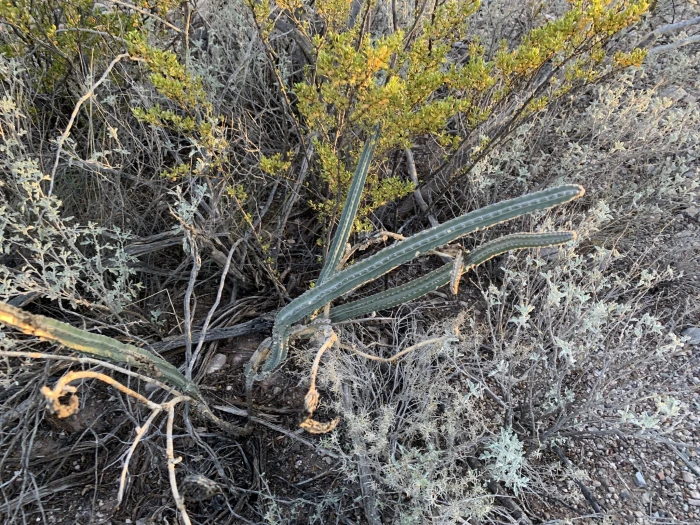Nightblooming Cereus
(Peniocereus greggii var. transmontanus)
Nightblooming Cereus (Peniocereus greggii var. transmontanus)
/
/

CK Kelly
CC BY 4.0
Image By:
CK Kelly
Recorded By:
Copyright:
CC BY 4.0
Copyright Notice:
Photo by: CK Kelly | License Type: CC BY 4.0 | License URL: http://creativecommons.org/licenses/by/4.0/ | Rights Holder: CK Kelly | Publisher: iNaturalist | Date Created: 2019-09-19T00:11:02Z |




































Estimated Native Range
Climate Requirements for Augsburg, Germany
| This Plant | Your Site | Plant Suitability for Your Location | ||
|---|---|---|---|---|
| • Precipitation | 4" - 26" | 34" | Your precipitation may be too high for this plant. | Too high |
| • High Temp. | 83°F - 110°F | 75°F | OK, but your summers are milder than normal for this plant | OK |
| • Low Temp. | 30°F - 43°F | 26°F | Your winter temperatures may be too cold for this plant | Too cold |
This plant may not grow well at your location - your precipitation is too high.
Summary
Peniocereus greggii var. transmontanus, commonly known as Nightblooming Cereus, is an evergreen succulent native to desert regions, specifically rocky outcrops and arid foothills in the Southwestern United States and Northwest Mexico. It can reach heights of 10-20 feet (3-6.1 meters) and a width of 10-15 feet (3-4.6 meters), often growing as a thin, unbranched cactus that is hard to spot when not in flower. Its stems are typically gray-green and may appear leafless. The Nightblooming Cereus is renowned for its large, showy, white and pink flowers that bloom nocturnally in the spring and summer, attracting pollinators such as bats and moths.
This plant is valued for its dramatic flowering habit and its ability to thrive in hot, dry climates, making it an excellent choice for xeriscaping and rock gardens. It is also used as an ornamental in desert landscapes. Nightblooming Cereus requires minimal maintenance, needing very low to low amounts of water and well-draining soil. It prefers full sun but can tolerate some light shade. While generally disease-free, it can be susceptible to root rot if overwatered or planted in poorly draining soils. It is not known for aggressive roots or significant pest problems. Due to its slow growth and specific flowering conditions, it is a plant that rewards patient gardeners.CC BY-SA 4.0
This plant is valued for its dramatic flowering habit and its ability to thrive in hot, dry climates, making it an excellent choice for xeriscaping and rock gardens. It is also used as an ornamental in desert landscapes. Nightblooming Cereus requires minimal maintenance, needing very low to low amounts of water and well-draining soil. It prefers full sun but can tolerate some light shade. While generally disease-free, it can be susceptible to root rot if overwatered or planted in poorly draining soils. It is not known for aggressive roots or significant pest problems. Due to its slow growth and specific flowering conditions, it is a plant that rewards patient gardeners.CC BY-SA 4.0
Plant Description
- Plant Type: Succulent
- Height: 10-20 feet
- Width: 10-15 feet
- Growth Rate: Slow
- Flower Color: White, Pink
- Flowering Season: Spring, Summer
- Leaf Retention: Evergreen
Growth Requirements
- Sun: Full Sun
- Water: Very Low, Low
- Drainage: Fast
Common Uses
Drought Tolerant, Fragrant, Low Maintenance
Natural Habitat
Native to desert regions, specifically rocky outcrops and arid foothills in the Southwestern United States and Northwest Mexico
Other Names
Common Names: Night Blooming Cereus, Queen Of The Night, Deer-Horn Cactus, Sweet-Potato Cactus
Scientific Names: Peniocereus greggii var. transmontanus, Peniocereus greggii subsp. transmontanus, Cereus greggii var. transmontanus, Cereus greggii subsp. roseiflorus
GBIF Accepted Name: Peniocereus greggii subsp. transmontanus (Engelm.) U.Guzmán